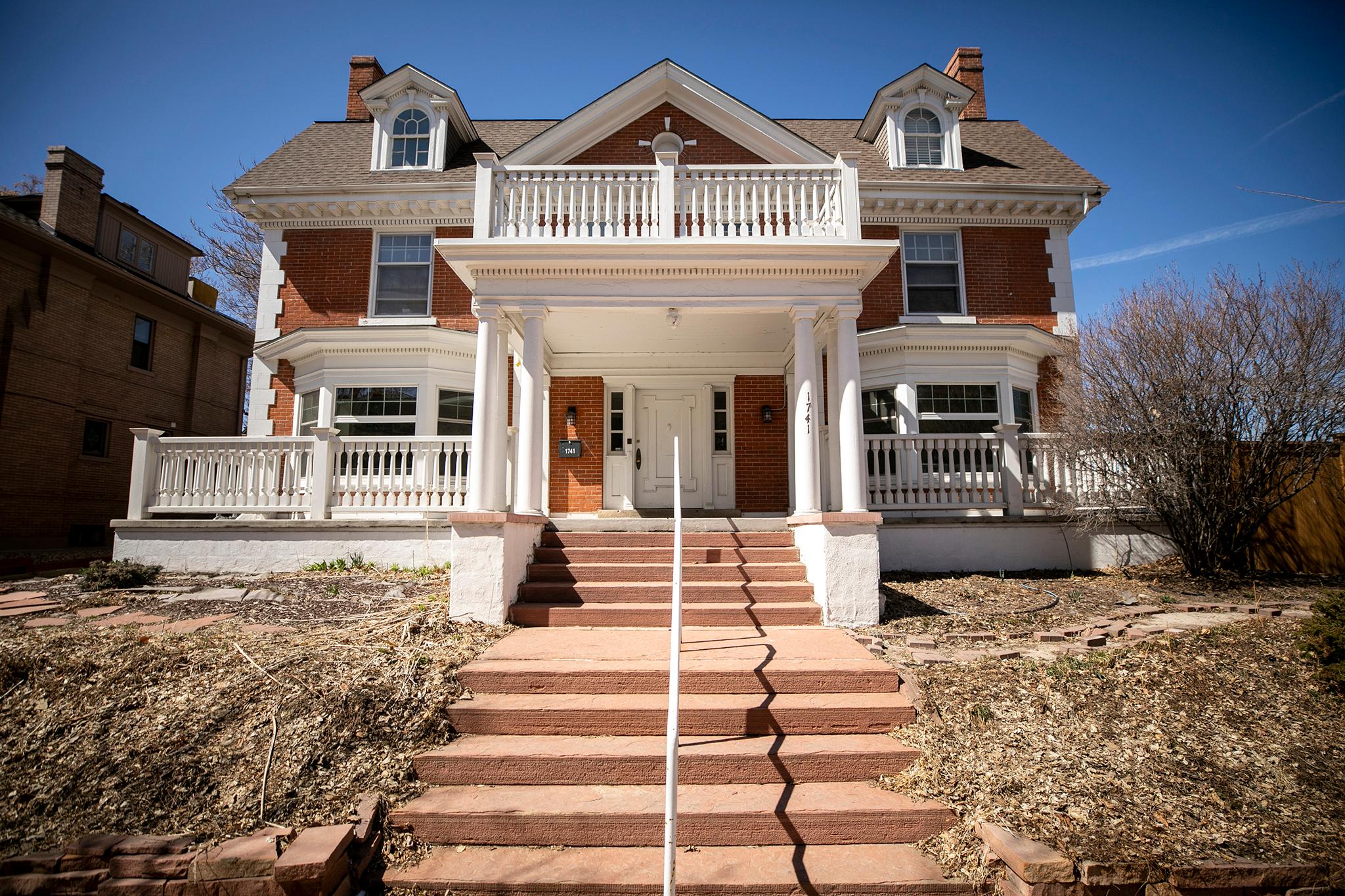The house at 1741 Gaylord St. was built in 1902 in City Park West for Edward Hurlbut, the owner of a chain of local grocery stores. Its next inhabitants were James Burger and Edith Burger; James was president of a Hamilton National Bank and a Colorado Senate member, and Edith was a founder of the nearby Children's Hospital. The house was designed in the Dutch Colonial Revival for an emerging Denver upper class by Gove & Walsh, a well known architecture firm at the time.
Is this history important enough to make the house worth saving?
It's a question on the minds of community members, developers, history buffs and City Council, as a petition to save the house from demolition and grant it landmark status heads to City Council for public comment and a vote on April 24.

Unlike many landmark applications, this one is owner-opposed.
The property's owner and would-be developer, Mike Mathieson, wants to demolish the home and turn it into 37 apartment units and 38 parking spaces. Mathieson said he wants the units to be part of Denver's affordable housing stock, with units priced at 80% to 120% of the Area Median Income (AMI) and aimed at middle class people who work at Saint Joseph Hospital, East High School and local businesses nearby.
That would range from about $62,600 to $98,500 for an individual, and $89,400 to $140,600 for a family of four.
The landmark applicants, community members Scott Holder, Karen Herbert and Peggy Muldoon, say they see the house as part of disappearing history in a fast-changing city; they urge reusing the structure over redevelopment.
They have the support of Historic Denver, a nonprofit focused on urban preservation, the Whittier and City Park West Neighborhood Associations and a number of neighbors who have written the city in favor of preservation. Opposing petitions have been circulating the neighborhood, one calling to save the house and the other from the developer pushing for more housing and property rights.
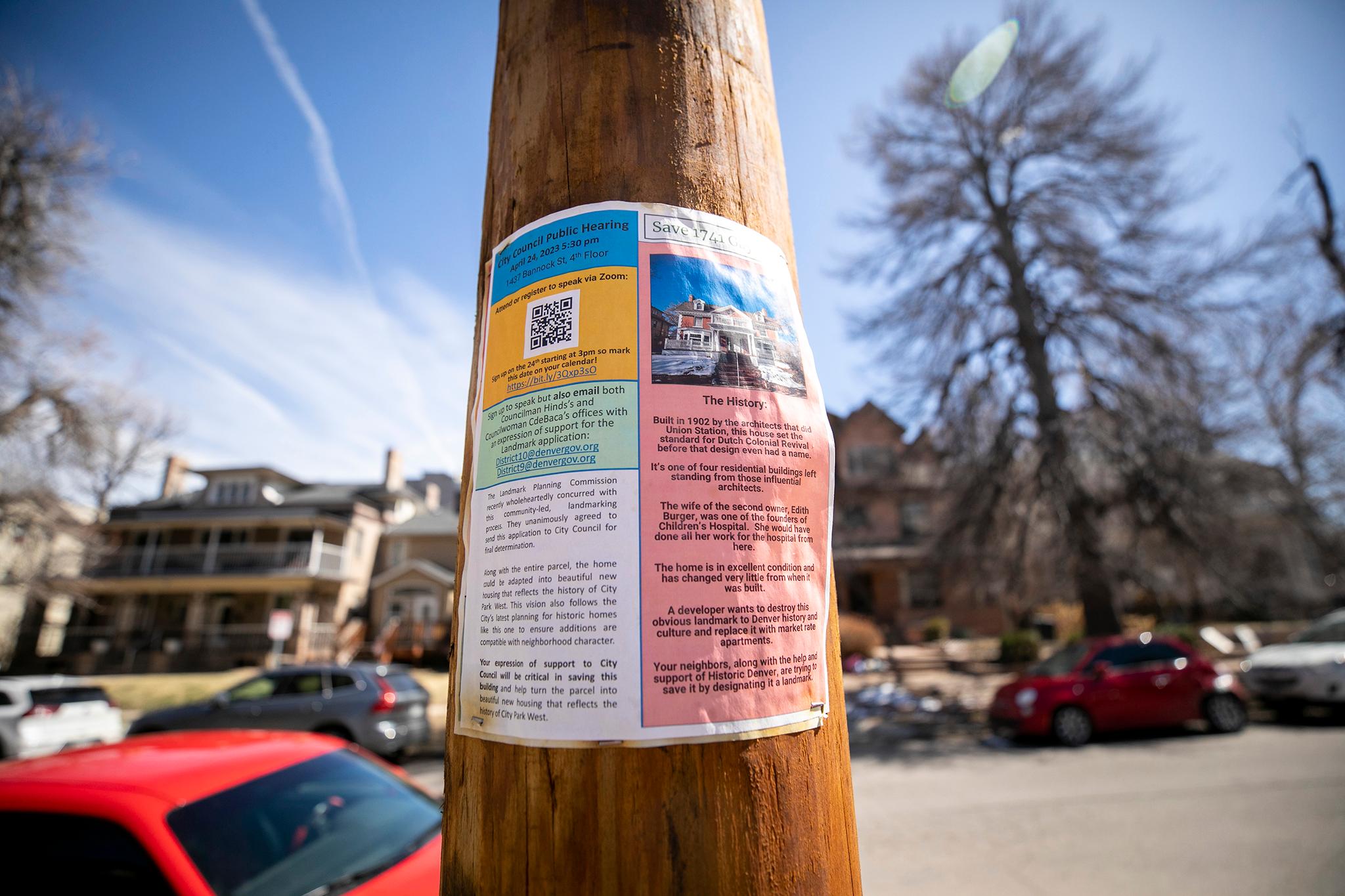
It's not the first time in recent months Council has considered an owner-opposed landmark designation. In December, Council voted down a petition to designate famous architect Richard Crowther's former home in Cherry Creek.
District 9 Councilmember Candi CdeBaca, who represents the neighborhood where the 1741 Gaylord property is, opposes the development and wants to see the property preserved (she was also one of two votes in favor of preserving the Crowther home). She thinks the house could be turned into single-room occupancy units.
"I don't think that owners always have the best interest of the community in mind," she said. "An owner's interest for profit maximization doesn't quite fit with the neighborhood's interests."
Conflicts like these are not just about individual buildings scattered across Denver; they lay bare a number of tensions in changing cities.
Can Denver preserve old single-family homes while responding to a housing crisis? How do cities save old buildings before they are too far gone? What matters more, property rights or collective history? And what makes a building's history important enough to be saved to begin with?
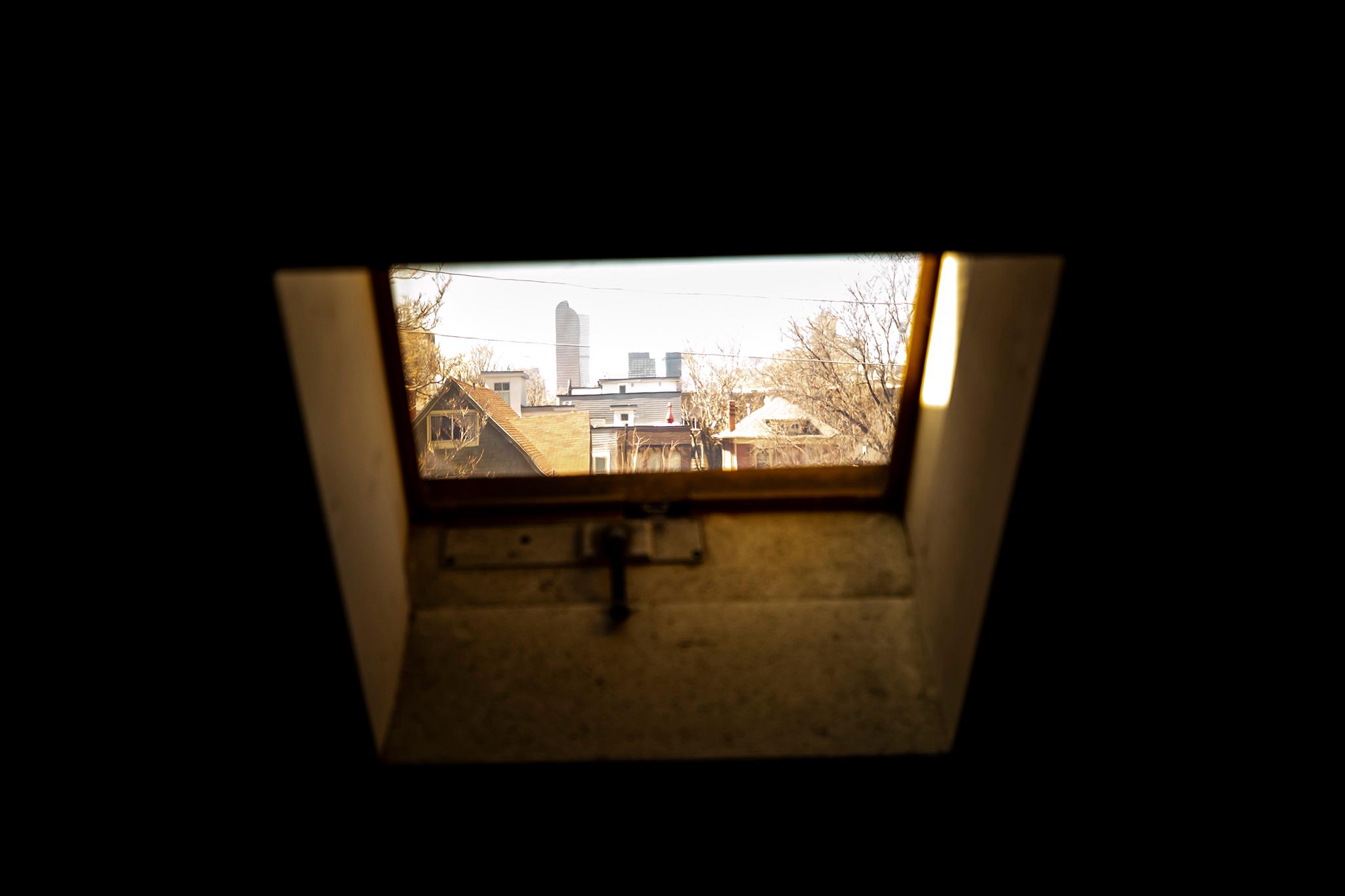
The landmark applicants say they are not anti-development, but that they want to see old properties reused rather than demolished.
"We know that this is a growing city, but I think there are some special buildings in our community that stand out and this is one of them," said Historic Denver CEO Andrea Burns. "This is a building with deep history, certainly architectural significance, and it really means something to this block, to these neighbors, to this area."
Holder, one of the applicants, lives near 1741 Gaylord. He was part of mediation sessions between the applicants and developer throughout the fall.
"We wanted to see Denver preserve, reuse and adapt historic homes instead of destroy them," he said. "We went in a lot of good faith effort in terms of embracing redevelopment and adaptive reuse of the entire parcel. So this wasn't your standard, 'No, don't do anything here.'"
The applicants only applied for the house, not the surrounding property, so that area could potentially be developed. Holder pointed to the Mullen Mansion and Mullen Flats in Capitol Hill. New condos were built around the 1906-era mansion instead of demolishing it.
But Mathieson said the home is in bad shape, and because it is so old, it is not set up for modern life and would be hard to turn into multiple units. Some rooms have been neglected or are very small, as is the one kitchen.
Nonprofit Judy's House was operating out of the house until selling to Mathieson for $1.5 million in 2021. The nonprofit serving children and families held therapy sessions and other programing there, so the property has been used recently. But many of the similar old homes along the block that are still standing have been converted into office space rather than housing, while new condos have popped up in the area.

"This house would never function as a home and I think that's very common over here," Mathieson said. "You could make it a bunch of smaller offices or something like that."
Mathieson is currently developing the plot next door into 74 hotel units meant to serve the hospital nearby. He said he needed just a few feet of 1741 Gaylord's lot for utility equipment on the original project, but when he was not able to buy just those feet, he bought the entire lot for a new project.
Other than those few feet, Mathieson said he would be willing to sell 1741 Gaylord to a historic-minded buyer, but that no buyer has come forward. Keeping the facade of the house and building off part of it are ideas that came up during mediation, but between city zoning and the priorities of the applicants and developers, the groups could not reach an agreement, in part because of parking included in the plan.
"You want to be able to have your car there," Mathieson said. "People want to be able to drive to the mountains, the public transportation is not that great because we're so spread out, and so there's a reason why we're building it that way."
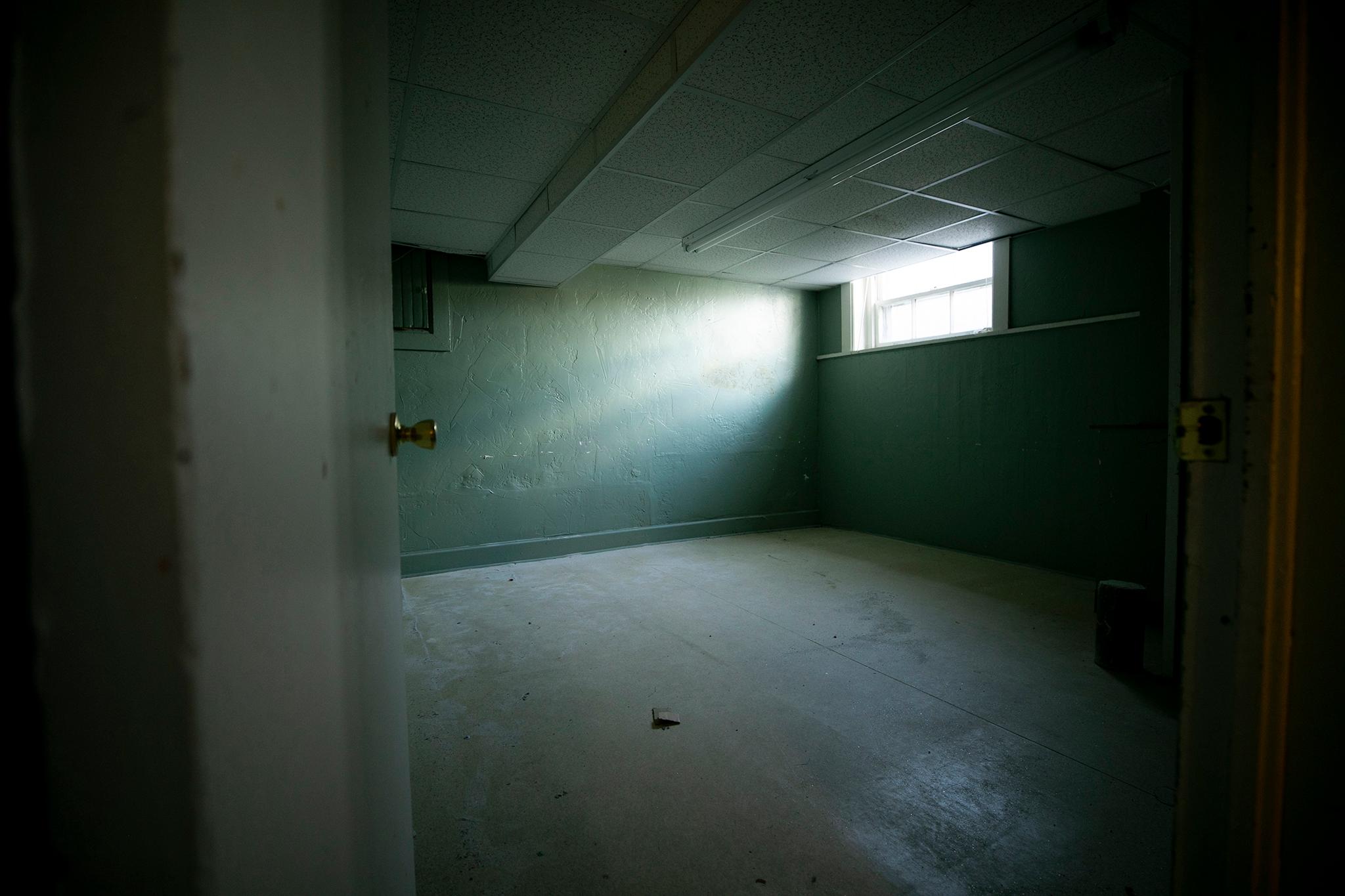
There is also a dispute over 1741 Gaylord's history.
To qualify for preservation, Denver's Landmark staff determine whether or not properties meet at least three out of 10 "significance criteria" and then make a recommendation before the application heads to City Council.
Of the criteria, Landmark staff found that 1741 Gaylord "has a direct and substantial association with a recognized person or group of persons who had influence on society"; "embodies the distinctive visible characteristics of an architectural style or type" and "is a significant example of the work of a recognized architect or master builder."
But makes a person or architect "recognized?" How do you decide if a person "had influence on society?"
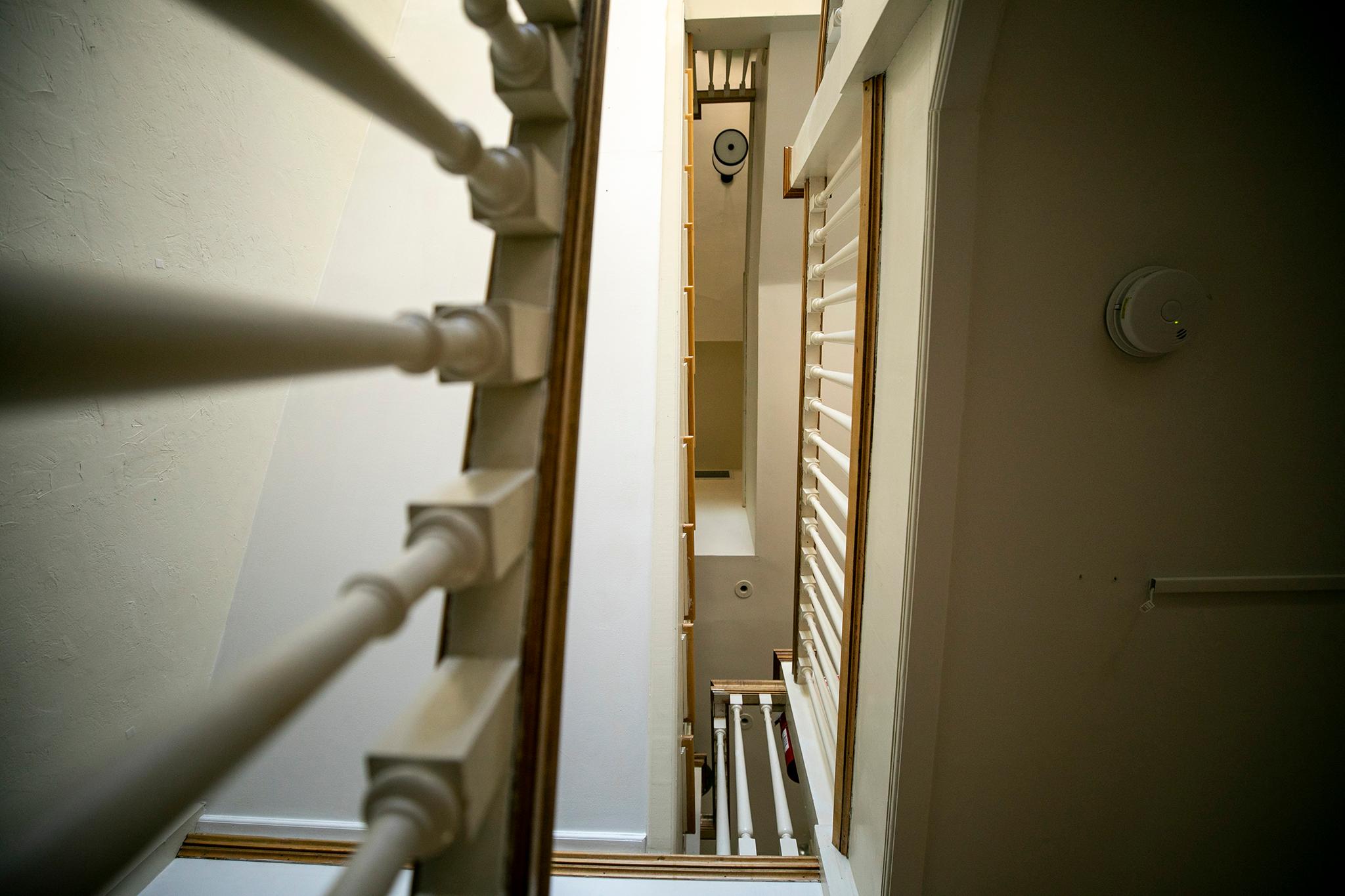
When it comes to 1741 Gaylord, Denver's Landmark Preservation Commission, the applicants and Historic Denver agree that the house's past inhabitants were "recognized" and "had influence."
The initial owner, Edward Hurlbut, had a successful grocery chain and was a member of the Denver Country Club and the local Masons chapter. The next owner, James Burger, was President of Hamilton National Bank, a member of the Colorado Senate and the Masons. Edith Burger helped found the Children's Hospital, and the architecture firm, Gove & Walsh, designed part of Union Station.
"Denver's Landmark Preservation Commission is made up of people who are experts," Burns said. "The research that we've done, the research that landmark preservation staff has done and the research that Scott [Holder] has done all reinforces the historic significance as well as the architectural significance of this building."
Mathieson disagrees. From his perspective, cities have many banks and grocery stores, some bigger than others. Hospitals have many founders, architectural firms have scores of architects and Denver had many Mason and Country Club members and Colorado Senate members.

Then there's the question of how Denver should weigh history and development during a housing crisis. Mathieson has said he does not plan to build luxury units.
"We already have a Cherry Creek, we've already got a Wash Park, we've got very expensive communities," he said. "We don't need to have every house here be a $5 million house for the ultra-wealthy."
And he's skeptical of the historic claim.
"There's tens of thousands of older homes in Denver," he said. "Are you just gonna say 'Because I don't want development here we're gonna make something historic?'"

